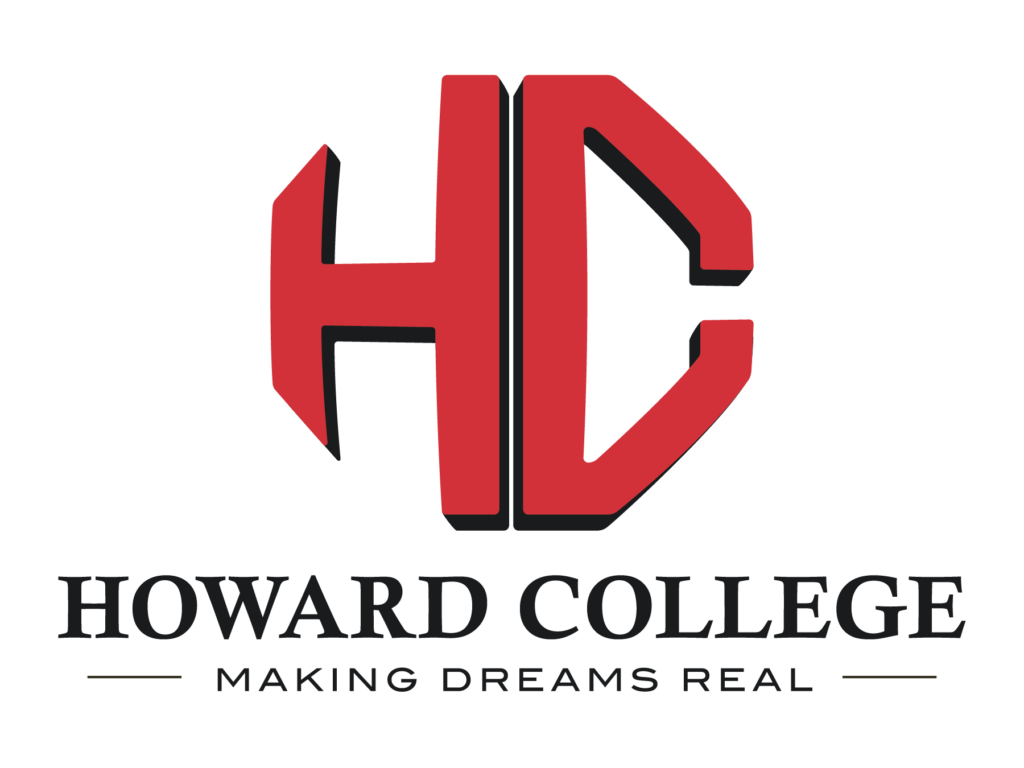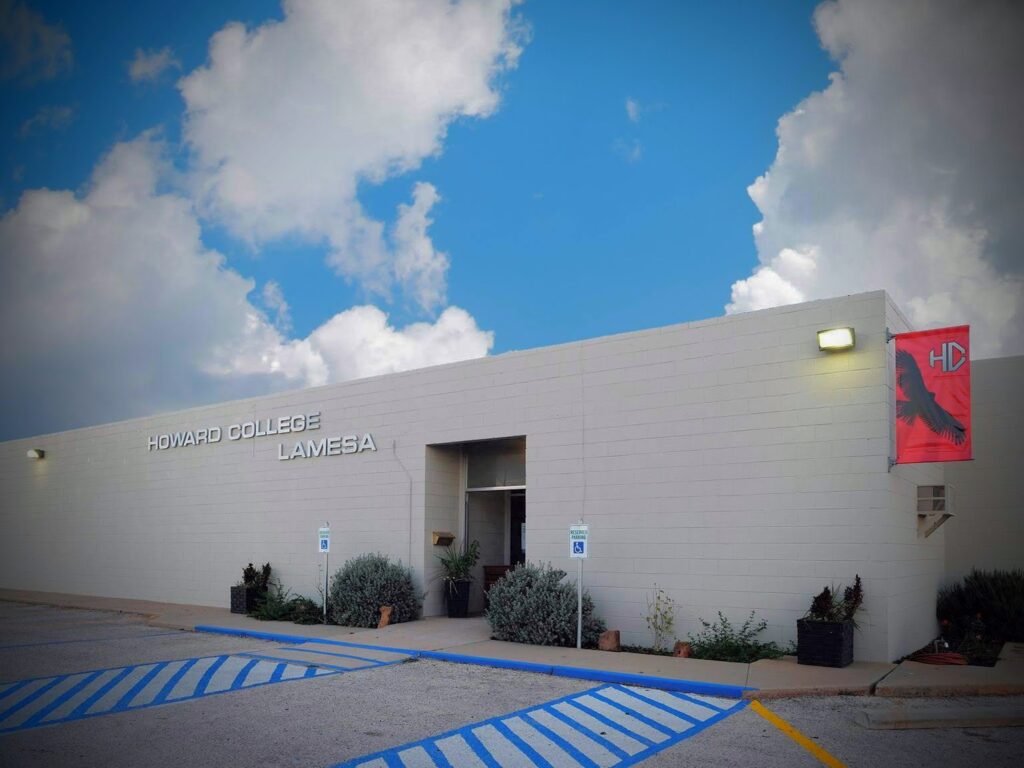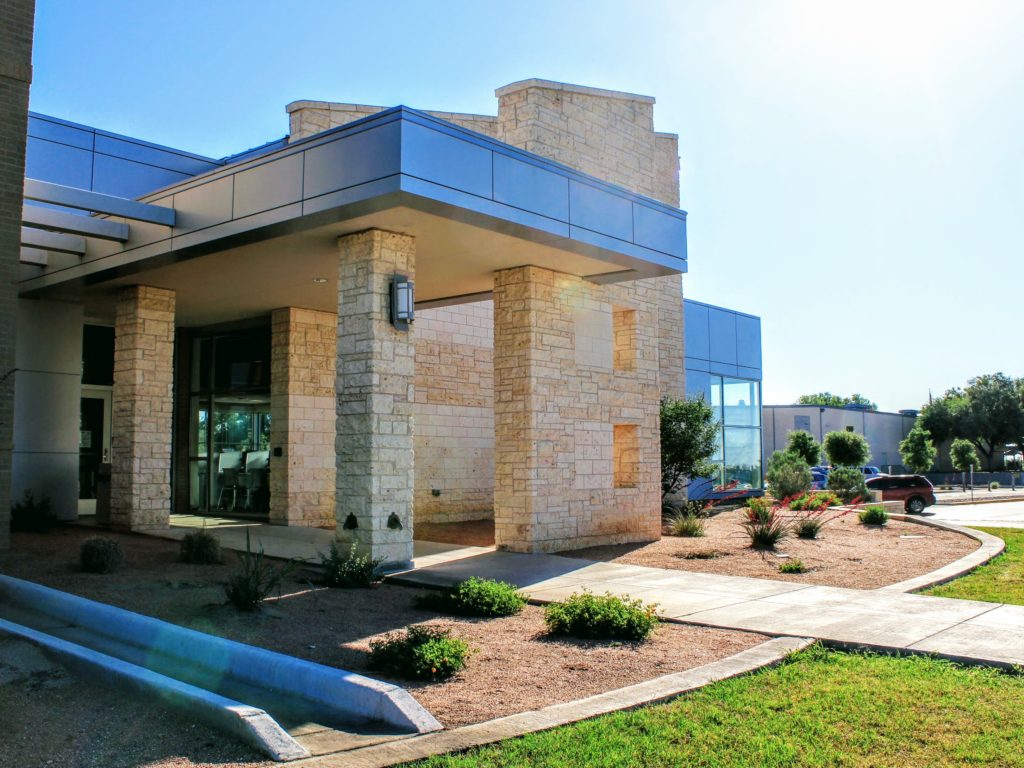San Angelo - Radiologic Technology Program
Online applications will be open April 1, 2026 – June 5th, 2026
Before submitting the Radiologic Technology online application:
- On the Health Professions San Angelo webpage, register for the online Health Professions Orientation (HPO) and view the online video.
- Review the Health Professions Booklet.
- Review the requirements on the “Admission” tab below.
- If you have any questions about the program, please contact us using the information below on the “Contact Us” tab.
Career Description: A radiologic technologist, also known as a radiographer or x-ray tech, is a vital member of the healthcare team who performs diagnostic imaging procedures on patients to aid in the diagnosis of disease. As an entry-level radiographer, he/she may perform a variety of examinations in the basic diagnostic area such as chest x-rays, extremities, and fluoroscopy. As a more advanced technologist, he/she may be specially trained to perform more advanced procedures such as CT’s, MRI’s, Mammography, Cardiac Catheterization, and Interventional Procedures. Opportunities for advancement in this career field also exist in other areas such as management and education.
Resources
- Academic Catalog (Degree Plan)
- Visit ATI for TEAS test information
- CastleBranch
(Click Health Professions to do Background check & Drug Screen) - HC & MSU Articulation Agreement
- “Be Seen” video by American Society of Radiologic Technologists (ASRT)
The Radiologic Technology Program is a two-year program leading to an Associate of Applied Science (AAS) degree in the ever-changing healthcare environment. This five-semester program provides students with the academic and technical skills necessary to completely perform a wide variety of radiologic procedures. Graduates will be able to produce diagnostic quality radiographic images of the human body for use in diagnosing medical problems. Upon successful completion of the program, students may apply to the American Registry of Radiologic Technologists (ARRT) to take a certification exam. Students who wish to work in Texas must also apply for a General Medical Radiologic Technologist license through the Texas Medical Board (TMB)
ACCREDITATION
Accreditation Status: Accredited
The program’s current award is 8 years. General program accreditation information and the current accreditation award letter can be found at this link:
Howard College – JRCERT
The AAS in Radiologic Technology program is accredited by:
- The Joint Review Committee on Education in Radiologic Technology
20 North Wacker Drive, Suite 2850
Chicago, IL 60606-3182
Phone: (312) 704-5300
Fax: (312) 704-5304
email at: mail@jrcert.org
https://www.jrcert.org/
The JRCERT promotes excellence in education and enhances quality and safety of patient care through the accreditation of educational programs. The JRCERT is the only agency recognized by the United States Department of Education to accredit educational programs in radiography, radiation therapy, magnetic resonance and medical dosimetry.
Programs accredited by the JRCERT must demonstrate that they are in substantial compliance with the relevant JRCERT accreditation standards.
RECOGNIZED CLINICAL AFFILIATIONS
Shannon Medical Center
Shannon Medical Center South
Shannon Clinic Beauregard
Shannon Clinic North
Shannon Clinic Southwest
Shannon Clinic – Jackson*
Scenic Mountain Medical Center Big Spring Hospital*
West Texas VA Health Care System*
*Currently inactive
Mission Statement
The purpose of the Radiologic Technology Program at Howard College, an integral part of the Health Professions Division, is to provide for the education of students in radiologic technology and provide learning opportunities that are innovative and educationally sound. We serve a 13-county area ranging from Lamesa to Junction. The program and the college are committed to personal development of each student in the field of radiologic technology so that he or she will be able to serve the community as a competent staff radiologic technologist.
Program Goals
- Graduates will be employable and meet the needs of the community.
- Student Learning Outcomes:
- Graduates will pass the ARRT registry examination on the first attempt within 6 months of graduation.
- Students will complete the program.
- Graduates seeking employment will be able to find employment within twelve months of graduation.
- Graduates will be satisfied with the Howard College radiologic technology program.
- Employers will be satisfied with the quality of graduates’ work.
- Student Learning Outcomes:
- Students will demonstrate effective communication.
- Student Learning Outcomes:
- Students will be able to communicate with patients of all ages.
- Students will be able to communicate in written and oral form.
- Student Learning Outcomes:
- Students will be competent when performing radiographic procedures.
- Student Learning Outcomes:
- Students will be able to demonstrate good radiation protection.
- Students will appropriately position patients for exams.
- Student Learning Outcomes:
- The students will demonstrate “Problem Solving” and “Critical Thinking” Skills.
- Student Learning Outcomes:
- The student will be able to use alternative positions for difficult or trauma patients.
- Students will be able to ask vital questions in order to arrive at well-reasoned conclusions.
- Student Learning Outcomes:
- Students will show professional development and growth.
- Student Learning Outcomes:
- Students will act in a professional manner in the clinical environment.
- Students will demonstrate knowledge of professional ethics.
- Student Learning Outcomes:
All admission requirements including prerequisite classes must be completed by June 5th. A new class begins every Fall semester.
Pre-application Requirements (Before June 5):
- Passing test scores from an approved college assessment exam are required to gain entrance into academic courses. If needed, HC administers the TSI exam. The Testing Schedule is posted on the campus website or may be obtained by contacting the Testing Center on each campus.
- Register for access to view the pre-recorded online Howard College Health Professions Orientation. Orientation information will be posted on the Howard College San Angelo Health Professions homepage. Registration information entered will be used by the program chair to send additional important program specific information via email.
- Prior to application to the Radiologic Technology Program, the applicant must successfully complete the required prerequisite courses with a final grade of “C” or above.
• BIOL 2101/2301 – Anatomy & Physiology I (Lecture & Lab)
• BIOL 2102/2302 – Anatomy & Physiology II (Lecture & Lab)
• MATH 1314 – College Algebra OR MATH 1332 – Contemporary Mathematics OR MATH 1342 – Elementary Statistical Methods - Students seeking admission to the Radiologic Technology program must take the Test of Essential Skills for Allied Health (TEAS AH). The student will be responsible for registering and paying for the exam through the ATI website (www.atitesting.com). The Testing schedule is on the Howard College website. Please contact the Testing Coordinator at (325) 481-8300 ext. 3405 for more information. The TEAS AH test can be taken once every 30 days with a maximum number of three (3) times per admission cycle (September 1 – May 31).
- Successful completion of the college-sponsored criminal background check through CastleBranch when you submit your online application or between April 1st and June 5th. The link is located under Resources to the left.
- If you are not already enrolled as a Howard College student, apply to the college at ApplyTexas.org.
- Order the Compliance Tracker through CastleBranch using the code provided to you by the Radiologic Technology Program Chair and upload proof of the following immunizations: Hepatitis B (2-dose Heplisav-B series OR 3 doses OR a positive titer; if doing the 3-dose series, must have at least received the first 2 doses by the application deadline; if doing the 2-dose series, must have received the first dose by the application deadline), MMR (2 doses OR a positive titer), Tdap (Tetanus, Diphtheria, Pertussis – one dose within the last 10 years), Varicella (2 doses OR a positive titer), and PPD (TB Screen) done within the last year (if getting a new screen, it is recommended to do in May prior to the application deadline to maximize the time it is good for since it must be repeated annually if selected.)
Application Requirements June 5.
- Submit the online application to the Radiologic Technology Program along with unofficial transcripts from each college /university attended including Howard College by June 5th.
Radiologic Technology Program Selection Process:
- Successfully complete all Pre-Application and Application Requirements
- The top candidates with the highest score for A&P I & II, MATH Course and TEAS AH Score are scheduled by the program chair, for a “Shadowing” Day and an interview.
- The scores from the interview and Shadowing Day are totaled and added to the scores from the Pre-requisite courses and TEAS AH exam and the top twelve students plus two alternates are selected for the Fall Semester class.
Prior to the start of Fall the Semester, selected students must do the following when instructed to do so by the program chair:
- Successfully take and pass the approved Basic Life Support for Health Care Providers class.
- Pass a ten-panel drug test (30 days prior to beginning clinical rotations).
- Show proof of health insurance
- Pass a physical exam.
- Provide documentation of having taken the flu vaccine.
Travel for Clinical Practicum
During the course of the program, students will have lecture / clinical assignments requiring travel from San Angelo to Big Spring or from Big Spring to San Angelo.
Evening, Weekend, and Staggered Hours for Clinical Practicum
During the course of the program, students will have a clinical schedule that requires the student to be in the clinical setting during the daytime, evening, and/or weekend hours. At a minimum, each student is required to do 12 days of evening and/or weekend hours. A shift ending past 7:00 PM is considered evening hours. Daytime clinical hours can be scheduled between the hours of 5:00 AM and 7:00 PM.
Transfer of Credit
Transfer of RADR credit from other programs will be evaluated on an individual basis.
Online Radiography Courses
During the course of the program, one radiography course (RADR 2217) is delivered online; all others are delivered face-to-face.
Grading System:
The grading scale for the Radiologic Technology Program is as follows. Students must pass all RADR courses with a 75 or higher. Courses with a prefix other than RADR may have a different grading scale. Students should refer to the syllabus for that course.
90 -100 = A
80 – 89 = B
75 – 79 = C
70 – 74 = D
69 and below = F
Radiological Technology Expenses in Addition to Tuition and Fees
These expenses in addition to tuition and fees are approximate only and are subject to change.
Tuition and Fees for each semester can be found in the Howard College Catalog.
Fees Associated with Admission:
- Immunizations – Variable
- Background Check – Variable
In addition to tuition/fees assessed by the college, the following approximate additional fees are the responsibility of the student and are subject to change:
- Basic Life Support Class for Health Care Providers (CPR) – $56
- Physical Exam – Variable depending on health insurance
- 10-Panel Drug Test through Castle Branch – Every 12 months (Cost is variable)
- Health Insurance – Variable
- TB Test (PPD) – Variable depending on health insurance
- Flu Shot – Variable
- Clinical Travel Expenses – Variable
Uniforms:
- Scrubs – red top / black pants – $60 each set (each student will need at least 2 sets of scrubs) (variable)
- Lab coats are optional – $40 (variable)
- Program Patch – $6
Textbooks: (prices are variable)
- Fall Semester I – $700
- Spring Semester I – $80
- Summer Semester I – No Additional
- Fall Semester II – $220
- Spring Semester II – $350
Licensing Expenses during Final Semester:
- Texas Medical Board Application and Certification Fee – $80
- Fingerprinting – $40
- Texas Medical Board Jurisprudence Exam – $34
- ARRT Application Fee – $225
For questions or additional information regarding this program, please contact the Program Chair:
Julie Book, MSRS, R.T. (R), (M), ARRT
Program Chair – Radiology Technology
(325) 481-8371, ext. 3433
jbook@howardcollege.edu
Or the Health Professions Assistant:
Kelli Rowe
(325) 481-8371, ext. 3435
krowe@howardcollege.edu




